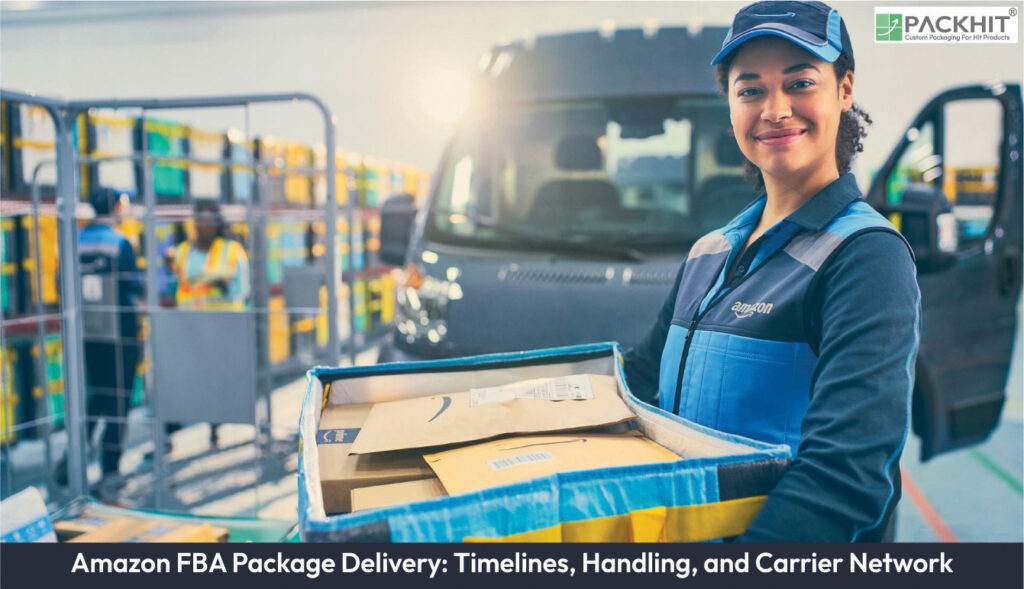Amazon FBA (Fulfillment by Amazon) package delivery encompasses a complex logistical framework designed to ensure efficient movement of goods from manufacturers to Amazon fulfillment centers and ultimately to end customers. This process involves critical elements such as delivery timelines, package handling protocols, and carrier selection criteria, each of which plays a pivotal role in maintaining operational efficiency and customer satisfaction. Manufacturers seeking to integrate their products into Amazon’s FBA system must navigate stringent packaging requirements, adhere to specific shipping timelines, and select carriers that align with Amazon’s standards for reliability and cost-effectiveness.
What are the Delivery Timelines for Amazon FBA Packages?
Delivery timelines for Amazon FBA packages are governed by multiple factors, including the shipping method, carrier performance, and the geographic location of the fulfillment center. For inbound shipments to Amazon warehouses, manufacturers typically adhere to a timeline of 2–6 business days for standard freight and 1–3 business days for expedited shipping. Amazon’s internal processing time, which includes inventory checks and storage allocation, adds an additional 1–2 business days before products become available for sale.
For outbound deliveries to customers, Amazon employs a tiered shipping model based on Prime membership status and shipping preferences. Prime members often receive packages within 1–2 days, while non-Prime customers may experience delivery windows of 3–5 business days. Seasonal fluctuations, such as holiday demand, can extend these timelines, necessitating proactive inventory management by manufacturers.
How Does Amazon Handle Delays in Delivery Timelines?
Amazon mitigates delays through a combination of predictive analytics and contingency planning. If a carrier fails to meet delivery expectations, Amazon may reroute packages to alternative carriers or adjust delivery windows dynamically. Manufacturers are advised to monitor shipment tracking closely and communicate with Amazon’s support teams to address any disruptions promptly.
What are the Handling Requirements for Amazon FBA Packages?
Amazon FBA package handling is subject to stringent guidelines designed to protect product integrity and streamline warehouse operations. Packages must conform to specific dimensions, weight limits, and labeling standards to ensure compatibility with Amazon’s automated sorting systems. For example, individual packages cannot exceed 50 lbs in weight, and oversized items require specialized handling procedures.
Fragile items must be packaged with sufficient cushioning materials, such as bubble wrap or foam inserts, to prevent damage during transit. Additionally, manufacturers must use scannable barcodes and adhere to Amazon’s labeling protocols, which include the placement of FBA shipment labels on the exterior of each box. Failure to comply with these requirements can result in delays, additional fees, or rejection of shipments.
How are Packages Inspected Upon Arrival at Amazon Fulfillment Centers?
Upon arrival at Amazon fulfillment centers, packages undergo a multi-step inspection process. This includes verifying the accuracy of shipment labels, assessing the condition of packaging, and cross-referencing inventory counts against the manufacturer’s shipment manifest. Any discrepancies or damages are flagged for resolution, which may involve contacting the manufacturer or initiating claims with the carrier.
Which Carriers are Used for Amazon FBA Package Delivery?
Amazon collaborates with a network of carriers to facilitate FBA package delivery, including major logistics providers such as UPS, FedEx, DHL, and regional freight companies. Carrier selection is influenced by factors such as cost efficiency, delivery speed, and geographic coverage. For international shipments, Amazon often relies on air freight and ocean freight carriers to optimize transit times and reduce costs.
Manufacturers can choose to use Amazon’s partnered carrier program, which offers discounted rates and integrated tracking capabilities. Alternatively, they may opt for self-managed shipping arrangements, provided they meet Amazon’s requirements for carrier reliability and shipment tracking.
What is the Criteria for Carrier Performance?
Carrier performance is evaluated based on metrics such as on-time delivery rates, package handling quality, and tracking accuracy. Amazon requires carriers to maintain a minimum on-time delivery rate of 95% and provide real-time tracking updates to ensure transparency throughout the shipping process. Manufacturers are encouraged to review carrier performance reports regularly to identify potential issues and optimize their shipping strategies.
How Can Manufacturers Optimize Amazon FBA Package Delivery?
Manufacturers can optimize Amazon FBA package delivery by adhering to Amazon’s packaging guidelines, selecting reliable carriers, and leveraging predictive inventory management tools. Properly labeled and dimensioned packages reduce the risk of delays and additional fees, while carrier selection impacts both cost and delivery speed. Utilizing Amazon’s partnered carrier program can simplify logistics and provide cost savings.
Additionally, manufacturers should monitor inventory levels and shipping timelines to anticipate seasonal demand fluctuations. Proactive communication with Amazon’s support teams can help resolve issues quickly and ensure seamless integration into the FBA system.

